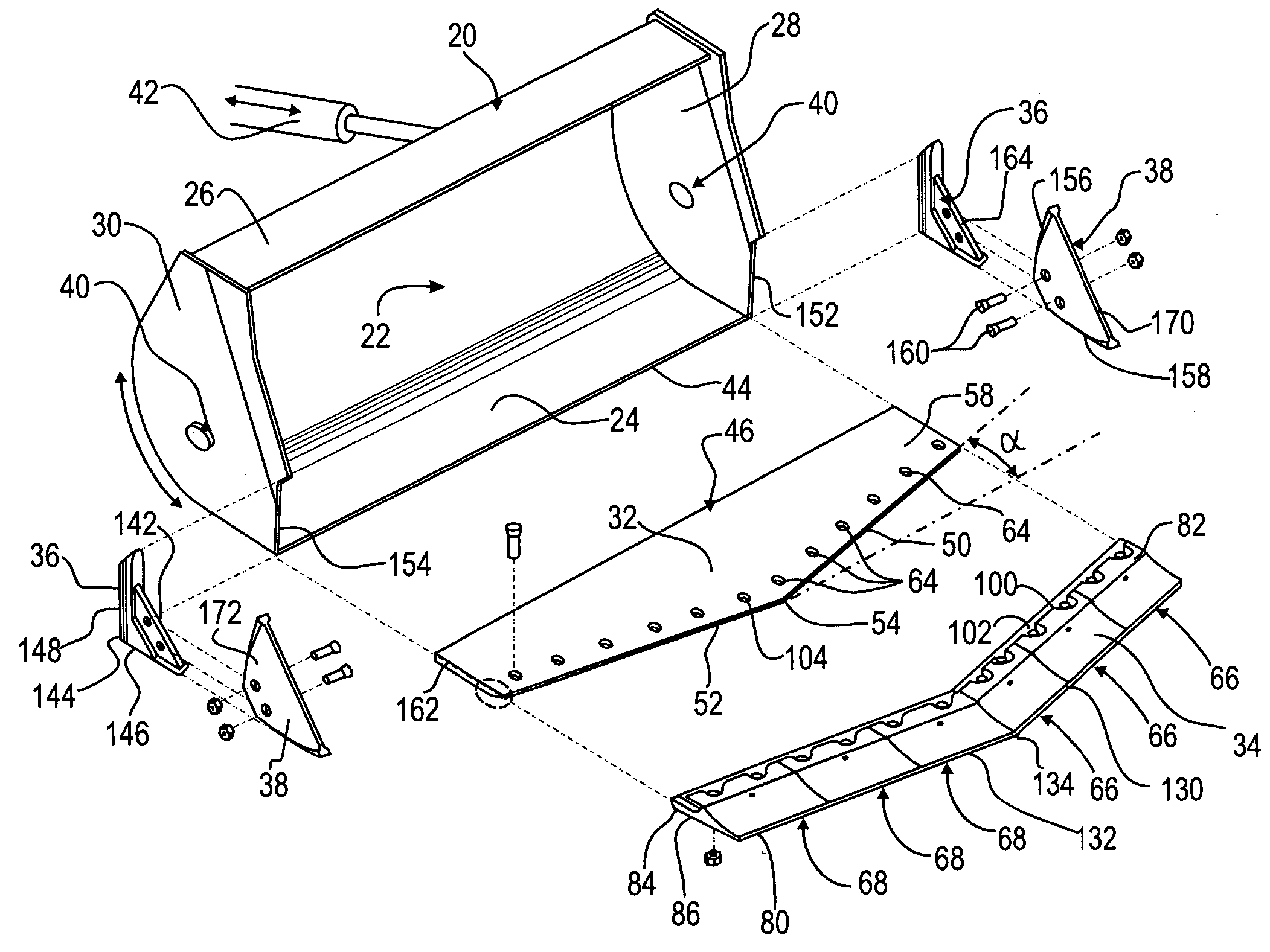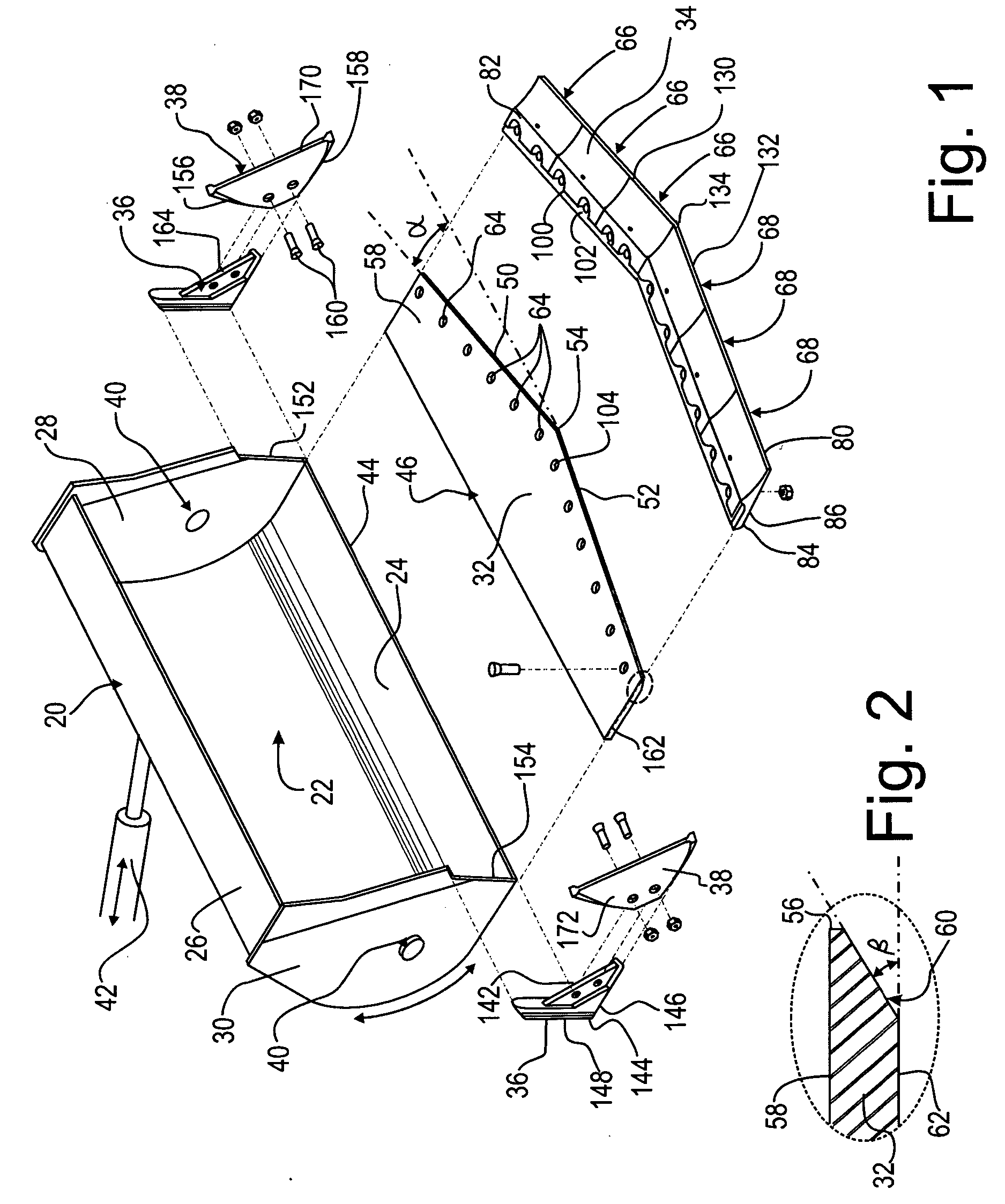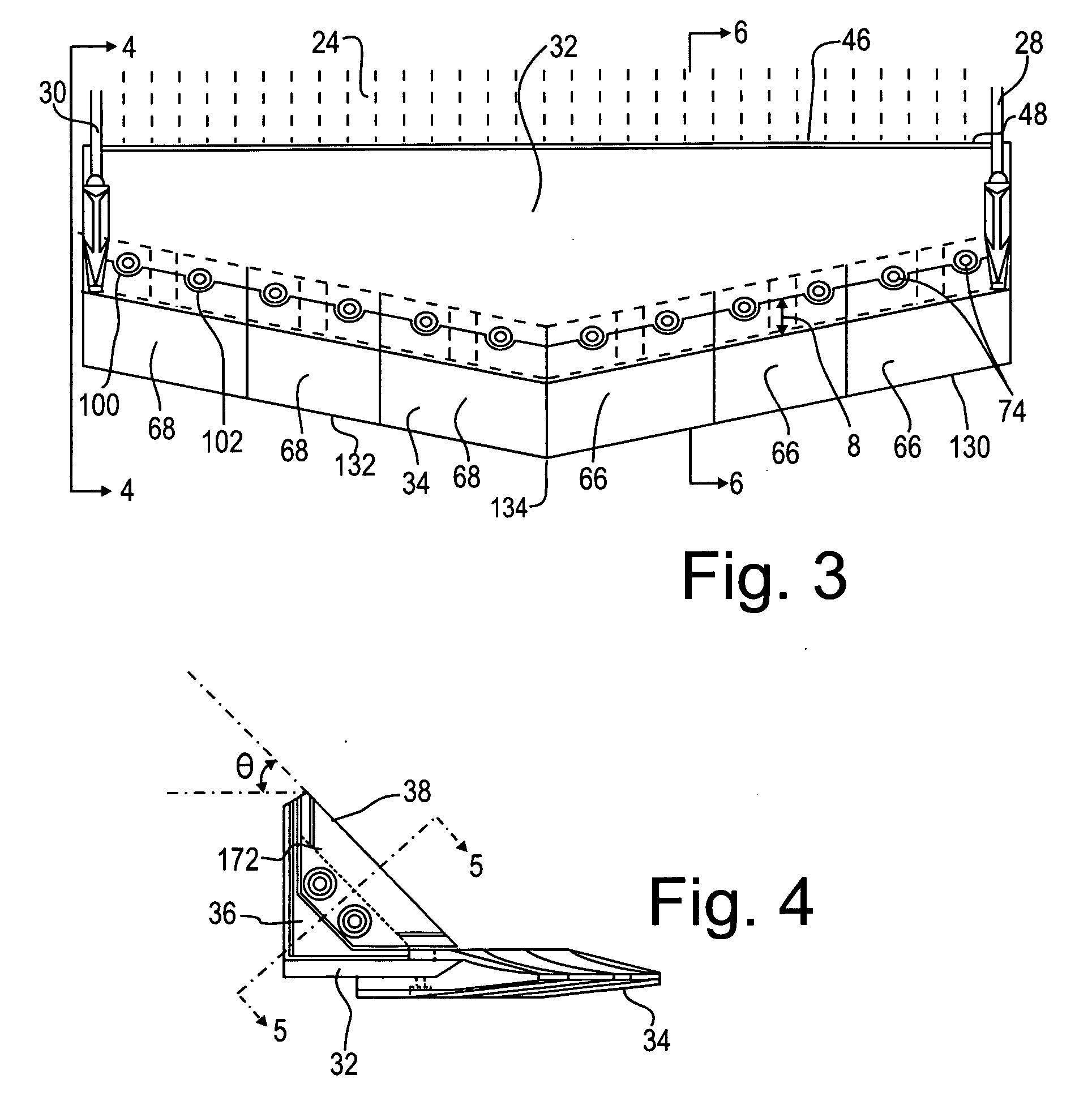Wear plate assembly
a technology of wear plate and assembly, which is applied in the direction of mechanical machines/dredgers, soil shifting machines/dredgers, constructions, etc., can solve the problems of reducing the wear so as to reduce or eliminate the movement of the wear plate, reduce the shear stress of the bolt, and the effect of thickening the wear lip section
- Summary
- Abstract
- Description
- Claims
- Application Information
AI Technical Summary
Benefits of technology
Problems solved by technology
Method used
Image
Examples
Embodiment Construction
[0060] The description that follows, and the embodiments described therein, are provided by way of examples of particular embodiments of the principles of the present invention. These examples are provided for the purposes of illustration, and not of limitation, of those principles and of the invention. In the description that follows, like parts are marked throughout the specification and drawings with the same respective reference numerals. The drawings are not necessarily to scale and in some instances proportions may have been exaggerated in order more clearly to depict certain features of the invention. In this description the terms “leading” or “forward” refer to the direction of advance of the equipment into a work substance, be it earth, or gravel, or rock, or some other substance.
[0061] By way of general overview, FIG. 1 shows an exploded view of a bucket 20 of a front end loader (not shown) having wear components for installation thereon. Bucket 20 has a backshell assembl...
PUM
 Login to View More
Login to View More Abstract
Description
Claims
Application Information
 Login to View More
Login to View More - R&D
- Intellectual Property
- Life Sciences
- Materials
- Tech Scout
- Unparalleled Data Quality
- Higher Quality Content
- 60% Fewer Hallucinations
Browse by: Latest US Patents, China's latest patents, Technical Efficacy Thesaurus, Application Domain, Technology Topic, Popular Technical Reports.
© 2025 PatSnap. All rights reserved.Legal|Privacy policy|Modern Slavery Act Transparency Statement|Sitemap|About US| Contact US: help@patsnap.com



